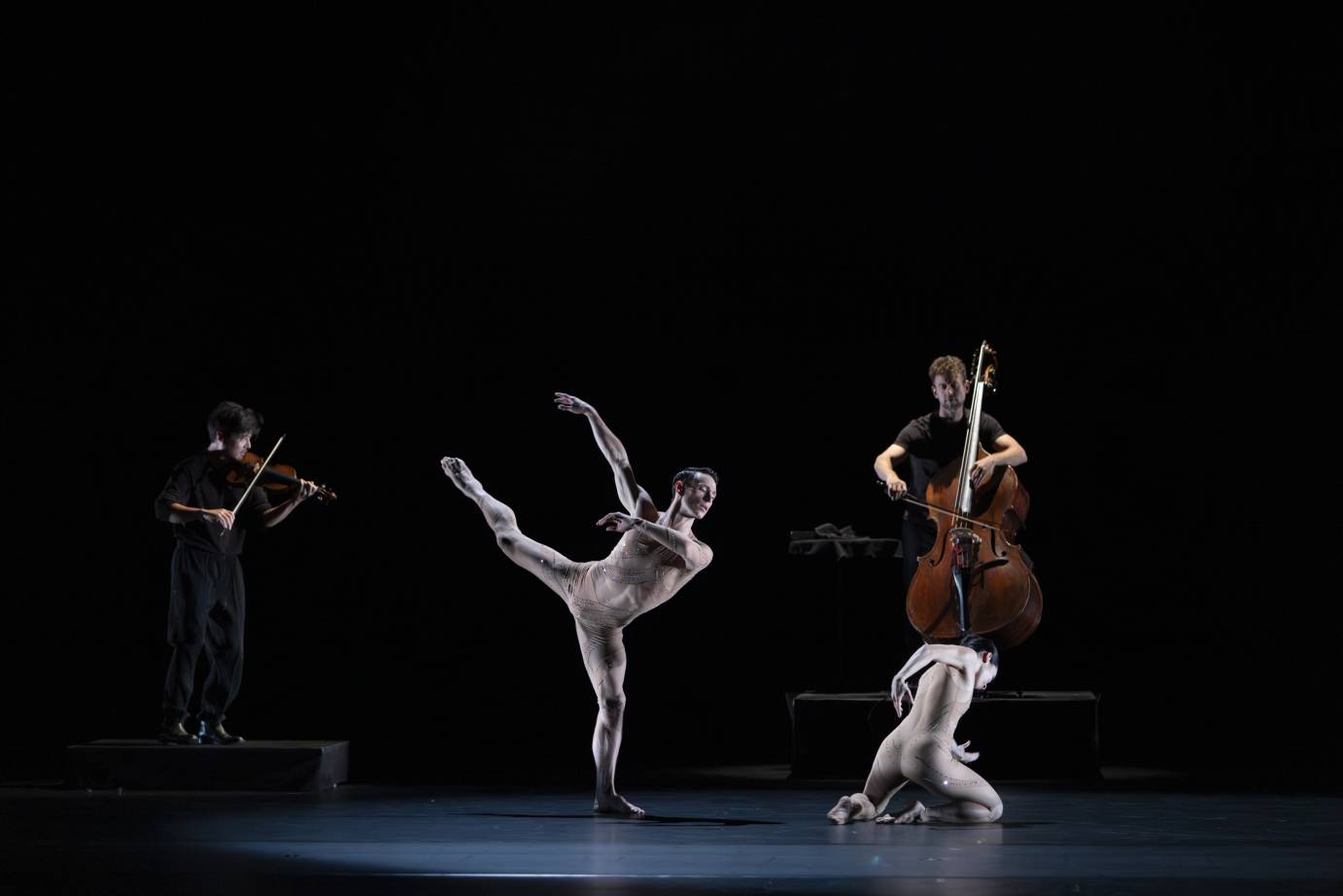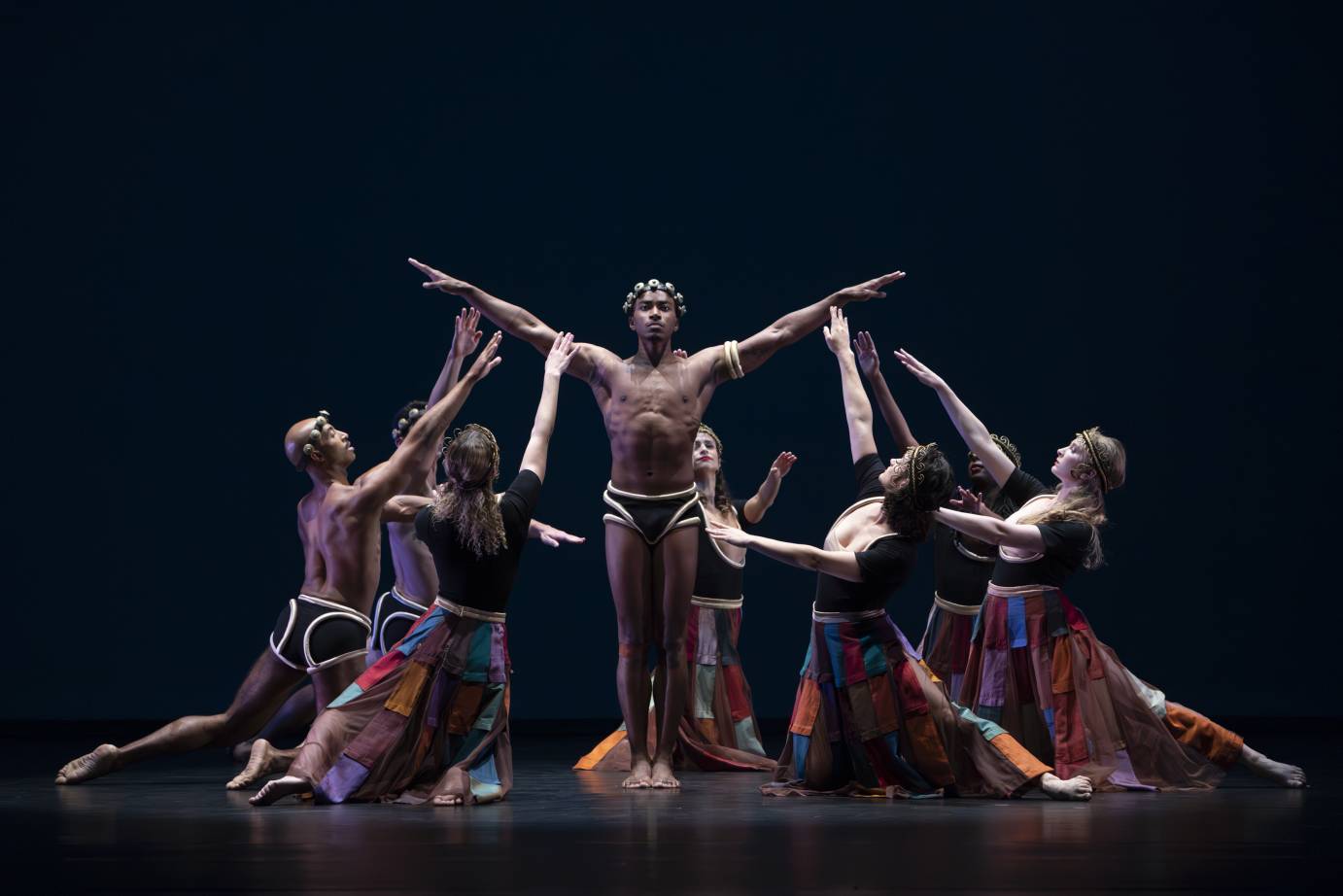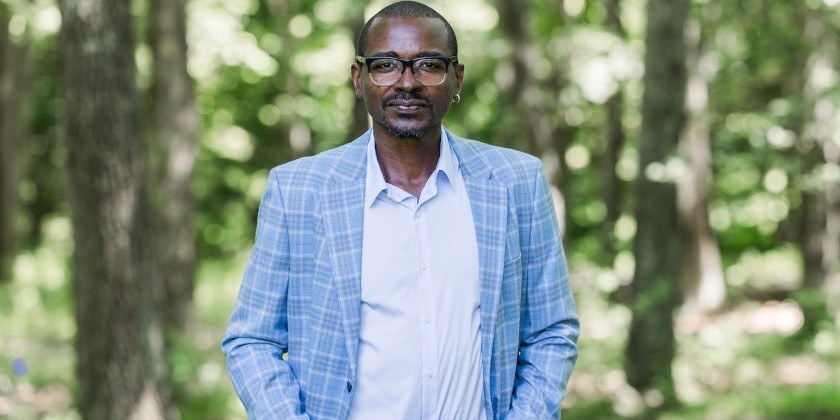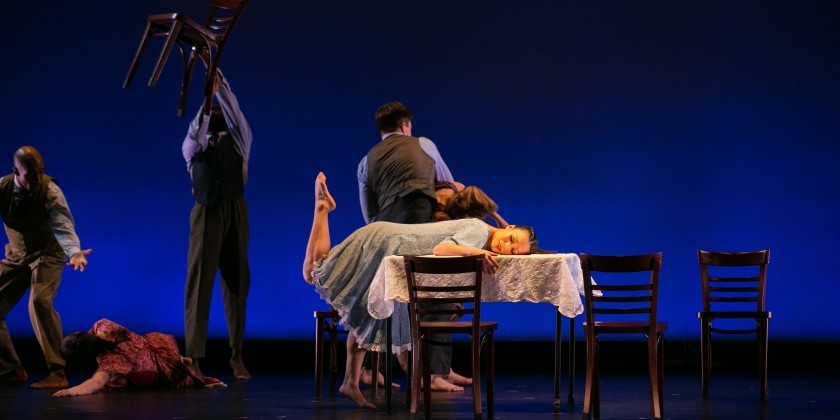IMPRESSIONS: Paul Taylor Dance Company's Fall Season at Lincoln Center

Choreography: Paul Taylor, Lauren Lovette, Larry Keigwin, Jody Sperling, Ulysses Dove
Artistic Director: Michael Novak
Music Director: David LaMarche
Conductors: David LaMarche, Tara Simoncic
Rehearsal Directors: Betty de Jong, Cathy McCann
Musicians: Orchestra of St. Luke’s, Time for Three
Dancers: Madelyn Ho, Kristin Draucker, Lee Duveneck, Alex Clayton, Devon Louis, John Harnage, Maria Ambrose, Lisa Borres Casey, Jada Pearman, Shawn Lesniak, Jake Vincent, Jessica Ferretti, Austin Kelly, Kenny Corrigan, Gabrielle Barnes, Emmy Wildermuth, Elizabeth Chapa
Venue: David H. Koch Theater at Lincoln Center
Dates: November 5 - 24, 2024
I last saw the Paul Taylor Dance Company in the spring of 2018. Since then, its founder, its raison d’être, the master modern-dance choreographer Paul Taylor died, and, with the exception of Madelyn Ho, the troupe’s entire roster of veteran performers moved on. Those admirable dancers, whose endearing individuality I’d gotten to know over the years, were an integral part of my appreciation of Taylor’s work. So, it was with uncertainty that I “revisited” the PTDC, now under the artistic direction of former company dancer Michael Novak, for their three-week fall season at Lincoln Center.
But what a “welcome back” it was! From the moment the curtain went up on Taylor’s Aureole (1962) — kicking-off the first of four performances I attended — the old sensations came pouring back. The familiar Taylor vocabulary — those long, low runs with the spiraling torso propelling the arms down and up, the sideways assemblés with parallel legs, stag leaps, lunges that push through the hip as the spine tilts in opposition — the lively Baroque music, and those elegantly simple costumes, usually variations on a unitard that reveal the dancers’ every move. And the dancers were spectacular.

At first, I found their dancing too polished. It was as if the movements were too easy for them, technically, and I didn’t see the varieties of “effort” so central to Taylor’s aesthetic. But these new terps soon won me over with how well they communicate the humanistic concepts underpinning all of Taylor’s choreography, even his “pure movement” works — notably, the iconic Esplanade (1974-75). Built entirely of relatable, pedestrian movements, that 50-year-old piece marks a milestone in the history of choreographic innovation, exciting viewers from start to finish, and touching them emotionally, with nary a single formal dance step. While I have cherished memories of its performance by former PTDC dancers -- memories that extend back to the original cast — as I watched this new cadre of Taylor dancers perform Esplanade, I felt they owned it!
I was also comforted to see that the company’s commendable three-pronged performance mission, which had taken shape in the years preceding Taylor’s death, in 2018, is still very much in place. The first mission, of course, is a continued commitment to performing Taylor’s 147 modern-dance works, many of which are masterpieces. And now that Taylor is gone, the company seems free to concentrate on presenting his greatest works and no longer obligated to perform those lesser pieces he was ill-advisedly commissioned to create during the last decade or so of his 88-year life.

Lisa Borres Casey in Paul Taylor's "Esplanade." Photo: Whitney Browne
Secondly, PTDC commissions new works by contemporary choreographers, which this fall included Chaconne in Winter and Recess by resident choreographer Lauren Lovette, and newly-appointed resident choreographer Robert Battle’s Dedicated to You (which I did not see). Finally, the company remains dedicated to performing works by choreographers whose pioneering movement explorations form the historical canon of modern and contemporary dance. To that end, this season offered revivals of Lovette’s Echo (2023), Larry Keigwin’s Rush Hour (2016), Ulysses Dove’s Vespers (1986), and two Jody Sperling works choreographed in the style of Loïe Fuller, Vive La Loïe! and Clair de Lune (2005).

Under-recognized for her revolutionary work in theatrical dance, costuming, and electric lighting design, Fuller is often over-shadowed by her turn-of-the-20th-century contemporary Isadora Duncan. Though I missed seeing Vive La Loïe!, technically a premiere, though it expands upon choreography Sperling created for the 2016 Fuller biopic, La Danseuse (The Dancer), I was mesmerized by Emmy Wildermuth’s performance of Clair de Lune, an exquisite re-vivification of Fuller’s unique form of visual-image-driven solo dancing. Covered in enormous layers of material, and wielding hidden poles that extend the length of her arms, the dancer conjures serpentine swirls of fabric that one can’t help but see as akin to the spiraling torsos that permeate Taylor’s movement vocabulary. Thanks to Sperling’s career-long dedication to re-creating Fuller’s physically demanding, interdisciplinary dance style, our understanding of Fuller’s place in the lineage of modern dance continues to deepen.
The revival of Keigwin’s Rush Hour makes visible an aspect of modern dance that drove the art form’s evolution through much of the 20th century: the crafting of “the well-made dance,” a skill at which Taylor reigns supreme. Though Keigwin’s piece is built of the kind of quick, darting movements he excelled at as a dancer, what makes his piece so striking is how well-crafted it is. A PTDC commission, it conveys a slice of urban life, sending numerous dancers scurrying about via purposeful walking, turning, and jumping. Yet with its carefully designed spatial patterns, balanced groupings, and acute use of repetition, the viewer’s “eye” is carefully guided and never feels lost amid the abundant activity. Though not terribly original, the work is a compelling reminder of how compositional principles function to snare and gratify dance viewers.

To be honest, I can’t figure out why Novak chose to revive Dove’s Vespers. Composed of Graham- and Horton-influenced vocabulary, it conveys the presence of a higher being. Its all-female cast walks with chests lifted and eyes focused skyward, as if led by an invisible, spiritual force. Yet while its propulsive percussion score by Mikel Rouse builds in excitement, the choreography doesn’t seem to go anywhere.

Though I missed Lovette’s Echo, I caught both of her premieres. The more exciting is Chaconne in Winter. It’s fueled by Time for Three (two violinists and a double bassist), who perform, spotlit, on individual raised platforms. Their rock-star attitudes and the ferociousness with which they saw away on their electrified instruments lend a commercial, big-arena sensibility to the proceedings. Costumed in gold-sparkled unitards, dancers John Harnage and the petite Ho flit about amid the musicians in choreography that feels Taylor-esque, but only superficially so. Mostly, the dancers move independently of one another, uniting for only brief moments of supportive partner work that doesn’t significantly alter their individual actions. We see Taylor’s parallel back attitudes with twisting spines, and rapid footwork performed in impressive unison, but as the piece progresses and the tempo accelerates, the movements grow sharper and lose the three-dimensionality that warms Taylor’s vocabulary. It’s a pretty dance, but its invigorating music (by Bach and Justin Vernon) is the star of the show.

In Lovette’s Recess, what’s problematic is how disconnected the choreography feels from the work’s overarching concept and from its music (by Errollyn Wallen). Judging from the childlike costuming and game-playing behaviors, the piece seems to want to depict a school-day recess period. The dancers’ motions are fast, busy, fun, and carefree, yet their pathways are strictly geometric, drawing neat angles and perfect circles that feel counter to the messiness of children’s spontaneous actions. A central duet is danced to spare, jazzy, plucking sounds of low-pitched strings. There’s a looseness to the music, lots of breathing space between the notes, and an unfinished quality that suggests noodling about, idle time, contemplation. Yet for no discernible reason, the couple’s choreography is made largely of continuous moves organized into rhythmic phrases that bear no resemblance to what we are hearing. Often, the two dancers meet up, touch, look at each other, and sometimes do a unison step or two, without establishing any apparent relationship. It’s hard not to see this in contrast to how, in a non-narrative piece such as Arden Court (1981), for example, Taylor can bring dancers together for very brief, often amusing, interactions that speak pithily of their thoughts or feelings toward one another.

While the most edifying aspect of the PTDC season was its presentation of 10 classic Taylor works (nine of which I saw), the highpoint for me was being introduced to his Images (1977), a piece I’d never seen before. The title says it all. It’s an episodic, image-driven piece, inspired by the flat, two-dimensionality of the human figures depicted in ancient Egyptian art. It starts with still, meditative tableaux, bodies tightly circled around a central figure who ascends from within the cluster. In a livelier second section, those original body shapes become animated, and in a slower third portion Taylor toys intriguingly with the odd linearity of the forms. We watch dancers process across the front edge of the stage, like long-ago peoples traversing vast deserts, moving across time and space, leaving evidence of their existence behind in their artwork. Whiffs of characters emerge from time to time, as Taylor imagines the lives reflected in those tantalizing ancient images.

In The Word (1998), Taylor warns of the dangers of conformist fanaticism. Crucifix references abound in the repetitive trudging of back-to-back couples -- one dancer draped down the back of a bearer who treks hunched over, arms extended cross-like to the sides. A cowering, humbleness is felt as dancers walk with wrists crossed at the nape of the neck, elbows bent, forearms pressing against the back of skull. Their bodies are forced into head-down postures, and their pacing grows into a frightening fervor, while an impish “non-believer” scampers naked among them, signaling hope for a newborn, enlightened humanity.

Taylor’s darkly lyrical groupwork Promethean Fire (2002) — danced to famous Bach keyboard music, including the thrilling “Toccata and Fugue in D Minor” — proved an audience favorite, as always. Yet oddly, his Lost, Found and Lost (1982) failed to resonate with the crowd. A satiric portrayal of the behind-the-scenes boredom of runway models, its choreographic vocabulary alludes to their aloof postures and strutting style, and the static poses of catalog models and department store mannequins. Brilliantly, Taylor juxtaposes this physical ennui against the aesthetically opposite, yet equally boring, sounds of the work’s soothing “elevator music” score (re-orchestrated by Donald York). Comprised of string-heavy, Muzak-style arrangements of sentimental pop tunes (think, “Red Roses for a Blue Lady” or “As Time Goes By”), the smoothly-phrased, cascading music contrasts hilariously with the dancers’ disjointed, non-rhythmic sequences of uninspired actions and long periods of stillness. I was surprised, however, by how silently and seriously the audience took in this piece. Not only was I the sole chuckler, but whenever I laughed the man in front of me turned and glowered in my direction.

As the season wore on, I realized that despite the inviting familiarity of what I was seeing onstage, the spectators I was sitting among were confoundingly “new.” Watching Taylor’s Dust (1977), I was appreciating that work’s illumination of how strongly influenced Taylor was by Martha Graham, for whom he danced for seven years. One sees the Graham-technique roots of Taylor’s signature vocabulary as dancers charge through space with contracted torsos, both hands placed deliberately at the front of one hip joint. And we see Graham-like employment of stark, symbolic props, an intimidating, lone set piece, and dramatic exploration of an agonized female character. Yet, my appreciation was repeatedly invaded by outbursts of unnecessary applause at virtually every pause in the dancing and rest in the music. Could those around me really not hear the unresolved tension in the music that signals there’s more to come, nor understand that the action is simply “taking a breath” and will continue? My only explanation is that they were attending to the performance in the fashion that many people today approach conversation. They remain distracted until the other person stops talking; then upon noticing the silence, they suddenly “leap into action” with a thoughtless response, relishing the freedom to once again be the actor and not the “imprisoned” listener.

Fortunately, however, the last performance I saw closed with Funny Papers, Taylor’s tickling homage to lovers of newspaper comics, danced to a suite of irresistible novelty songs. Choreographed in collaboration with its original solo dancers, the work is universally accessible.
Such a good time was had by all, that I came away with the same feeling I’d always had about the PTDC — you can bring anyone, and they’ll find at least one piece that turns them into a fan of modern dance.












